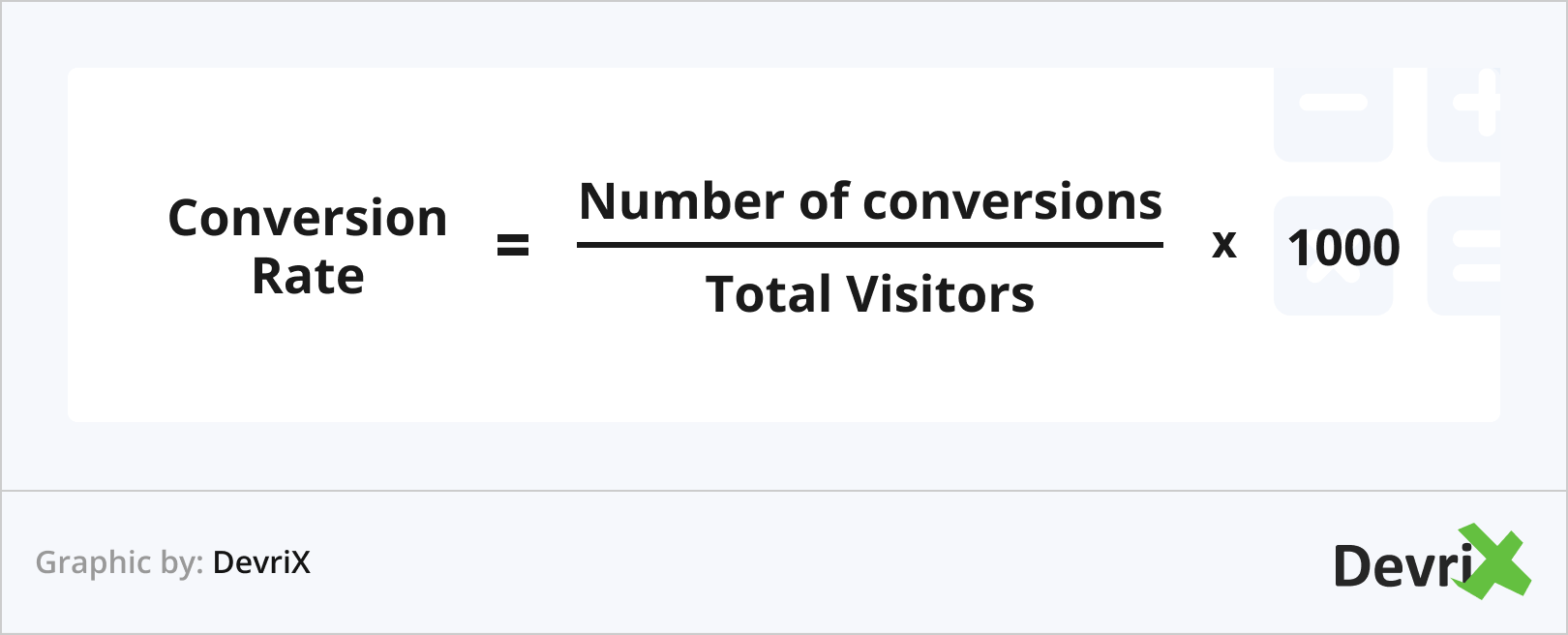If you want to maximize your eCommerce website, you have to put in some serious work. One key piece to this puzzle is optimizing your eCommerce conversion rate.
Consider your conversion rate as a compass for your business. It provides valuable insights into whether you’re reaching your objectives or need to make adjustments. Monitoring it closely as you work hard to boost your revenue is a must-do.
In this article, we are going to look ata selection of eCommerce conversion rate optimization (CRO) tips, strategies, and tried-and-tested practices that can enhance your customers’ journey, encourage purchasing decisions, and ensure a seamless buying experience.
Readers Also Enjoy: How to Optimize Your WordPress Website’s UX for Success – DevriX
What Is an eCommerce CRO?
eCommerce Conversion Rate Optimization (or eCommerce CRO) is the process of boosting your conversion rate by implementing small, yet, impactful improvements. These will eventually elevate your user experience (UX), resulting in a natural increase in conversions.
What Is a Good Conversion Rate?
The conversion rate represents the percentage of web visitors who become buyers within a specific time frame. The more visitors make a purchase, the higher the conversion rate.
Calculating the conversion rate is simple, and there’s a straightforward formula to do it:

There is no exact answer to what is a good conversion rate. Improving it means constantly improving the user experience which is an ongoing process.
In Q1 2023, Statista reported the highest online conversion rates in the food and beverage sector, reaching 3.1%. The health and beauty sector closely followed with just under 3%. In comparison, the average conversion rate across all selected sectors stood at 2%.
So, if your website has 10,000 visitors in a month, and your conversion rate is 2%, 200 people made a purchase.
Tips and Strategies for eCommerce Conversion Rate Optimization
User experience is paramount for an eCommerce site’s success. A seamless and enjoyable journey enhances customer satisfaction, builds trust, and boosts conversions.
Factors like intuitive navigation, fast-loading pages, clear call-to-action buttons, and personalized recommendations all contribute to a positive experience, resulting in higher customer retention and increased sales.
Optimize Your eCommerce Websites for Mobile Users
The vast majority of people these days are navigating the Internet through their smartphones.
While the majority of websites are optimized for mobile, eCommerce websites often encounter issues. Тhe mobile eCommerce UX performance for the average top-grossing US and European eCommerce site is “mediocre”. Nearly all sites fall into a tight cluster of ‘mediocre’ (54%) and “acceptable” (37%). These results highlight the importance of mobile optimization of your eCommerce website.
When the purchasing process is streamlined and straightforward, the user experience is hassle free and customers can navigate through the eCommerce funnel and complete their transactions effortlessly. Moreover it can also bring a significant competitive advantage.
Strive for Crystal-Clear Product Descriptions
When it comes to the user journey, the product page takes the spotlight.
A great product description can work wonders, making users feel confident about their purchase. On the flip side, a lack of information might lead some to simply click-away from your website.
The product descriptions have to be crystal-clear and provide the precise information users are looking for. Instead of pushing empty words like “exceptional,” opt for things like the product’s composition (materials, ingredients), the technology used, its dimensions, your commitment to sustainability, etc.
Showcase Product Ratings and Customer Reviews
User reviews play a crucial role in instilling confidence in users regarding a product’s suitability and aiding them in making well-informed purchase decisions.
Websites that incorporate User-Generated Content (UGC) such as product reviews, experience significant improvements in their performance metrics. Many notice substantial increases such as 29% in web conversions, 20% rise in return visitors, and an impressive 90% in the amount of time spent on the site.
Product ratings (for example, star ratings) can also be incredibly helpful when defining a product.
By displaying both the product ratings and reviews, you not only enhance customer confidence in the product but also establish your authority as a seller.
Enhance Searching Options
Allowing users to search within specific categories will lead to a more focused and efficient browsing experience and result in better conversions. This is especially important on mobile devices, where smaller screens prompt users to use a refined product selection.
Add Trust Signals
Trust signals are website elements that reassure customers during their shopping experience. They serve as indicators that the site is legitimate.
Here are five examples of trust signals commonly used in eCommerce websites:
- SSL Certificate. A Secure Sockets Layer (SSL) certificate ensures that the website’s data transmission is encrypted and secure, customers are reassured that their personal information is protected.
- Secure Payment Options. Providing a variety of secure payment options, such as credit/debit cards, PayPal, or other trusted payment gateways, tells customers that their financial transactions are being protected and handled securely.
- Trust Seals and Badges. Featuring recognized trust seals and badges from reputable third-party security providers or industry organizations demonstrates the website’s commitment to security and compliance with industry standards.
- Clear Privacy Policy. Having a transparent and easy-to-understand privacy policy, outlining how customer data is collected, stored, and used, reassures visitors that their information is handled responsibly.
- Money-Back Guarantee or Return Policy. Offering a clear and generous money-back guarantee or easy return policy lets customers know that they can shop with confidence, knowing they have recourse if they are not satisfied with their purchase.
Ensure the Proper Functioning of Autocomplete Fields
Autocomplete fields can enhance user experience, save time, and reduce errors, but only if they work properly.
Even if the user misspells the item in a search field, providing accurate product suggestions ensures that customers find what they’re looking for, increasing the likelihood of conversion.
Examples for autocomplete fields include search bars, address forms, credit card details, and product suggestions. Accurate autocomplete functionality streamlines the shopping process and boosts customer satisfaction.
Readers Also Enjoy: 14 Quick Steps to Building Social Proof for Growing Businesses – DevriX
Mark Both Optional and Required Checkout Fields
If you present your customers with an overwhelming number of fields to complete before checkout, there’s a risk that they might abandon the process. Many times, people click away simply because they aren’t aware that most of the fields are optional.
Clearly labeling which fields are optional and which ones are required improves user experience and increases the conversion rate.
Be Careful With the Live Chat
Avoid the constant interruption of users by forcing them to continually dismiss the live chat feature. This not only irritates users but it candiscourage them from engaging with the chat and the website in the future. Instead, keep the live chat icon visible and opt for user-initiated live chat.
Hide Promo Code Fields Behind a Link
Empty form fields attract a disproportionate amount of user attention. Additionally, promotional fields like “Promo Code” are noticed immediately when displayed by default within the normal flow of form fields.
Ensure the promotional fields are clearly visible and stand out from other fields in the cart. Keep them collapsed to minimize emphasis and reduce the likelihood of abandonment.
Incentivize Account Creation
While encouraging users to create accounts may not seem hard, and is even beneficial to them, many sites fail.
That is why it is so important to clearly explain the benefits they can obtain if they create an account with your site.
For example, If they sign up they will receive discounted offers, free shipping, or points towards their next purchase.
Additionally, providing an option to check out as a guest is a good idea to avoid cart abandonment. However, it also allows first-time customers to get a feel for your company, and if they had a good experience, they may decide to sign up the next time they shop with you.
Readers Also Enjoy: How to Create a Working Customer Loyalty Program in 2023? – DevriX
Wrap Up
The goal of conversion rate optimization (CRO) is to enhance your existing website traffic. In fact, such a strategy not only boosts conversions, it transforms more visitors into loyal customers.
If you need assistance in maximizing your online store’s potential, DevriX can lend a hand with our specialized expertise in eCommerce solutions!



![11 Tips to Increase eCommerce Traffic [And Boost Revenue]](https://devrix.com/wp-content/uploads/2022/11/11-Tips-to-Increase-eCommerce-Traffic-And-Boost-Revenue-380x160.png)
